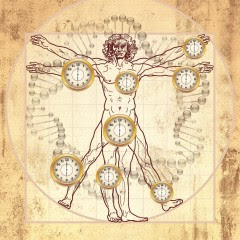A Medical College of Wisconsin study published in
the July issue of JNCCN found that older women are not receiving recommended
bone density assessment prior to adjuvant therapy with aromatase inhibitors,
possibly making them more vulnerable to bone fracture and comorbidity as a
result of injury.
Newswise, July 29, 2016— Aromatase inhibitors (AIs)—drugs that
stop the production of estrogen in women—are standard adjuvant therapy for
post-menopausal women with hormone-receptor positive breast cancer.
AIs are an effective treatment for this population, but have
the major side effect of bone density loss, which can lead to increased
fractures and long-term injury.
To ensure patient safety, the National Comprehensive Cancer
Network® (NCCN®)
recommends that patients undergo bone mineral density (BMD) testing before
starting treatment with AIs, and that women at increased risk for osteoporosis
consider antiresorptive therapy, such as bisphosphonates, which slow or stop
bone density loss.[1]
Researchers at Medical College of Wisconsin, led by John Alan
Charlson, MD, Associate Professor of Medicine, Division of Hematology and
Oncology, studied women ages 67 and older to assess when and if they were
undergoing the recommended bone density testing.
According to the findings, as women aged—increasing their odds
of osteoporosis and bone fracture—they were less likely to receive
NCCN-recommended baseline testing.
The study, Bone Mineral Density Testing Disparities among
Breast Cancer Patients Prescribed Aromatase Inhibitors (AIs), is featured in
the July issue of JNCCN –
Journal of the National Comprehensive Cancer Network.
“This study highlights sub-optimal U.S. compliance with
guideline recommendations for baseline BMD testing when starting AI therapy,”
said Dr. Charlson.
“Older women, at higher risk for fractures in general, are
least likely to get testing, and the slight increase in empiric treatment in no
way closes the gap.”
Looking at Medicare Part A, B, and D claims from 2006 through
2012, Dr. Charlson and fellow investigators found that approximately two-thirds
of patients received recommended baseline BMD testing.
Lower rates of baseline testing correlated to several factors,
including race and income, but the most substantial correlation, the
investigators found, was older age—86 years and older. In the study population,
baseline BMD test rates fell progressively from 73 percent in women ages 67-70
to 51 percent in women over the age of 85.
“The oldest patients are most likely to be vulnerable to bone
density loss, so BMD testing results may be especially important in this age
group for analysis of risks and benefits of treatment, as well as to determine
whom should be treated with bone-modifying agents,” said Dr. Charlson.
Older women are at higher risk of osteoporosis and bone
fracture. Hip fracture rates, according to the study, are seven times higher in
women ages 70 and older than in other populations and higher comorbidity is
also linked to these fractures.
Although the oldest women in the study were least likely to
receive BMD assessment, they did receive slightly higher rates of
bisphosphonates as empiric therapy.
“While a larger number of older patients did receive
bisphosphonates, this does not explain the disparities in bone density
findings, or even substantially change our finding that attending to BMD was
higher in lower risk younger women,” said Dr. Charlson.
“These findings may be even more important in light of recent
data from additional studies suggesting bone fracture rates may be even higher
than previously recognized for women using adjuvant aromatase inhibitors,” said
Steven J. Isakoff, MD, PhD, Massachusetts
General Hospital Cancer Center, Member of the NCCN Guidelines
Panel for Breast Cancer. “In addition, many women may now be using aromatase
inhibitors beyond five years, which may further increase the risk of fractures.
This study highlights that, as a breast cancer community, we
need to do a better job screening for bone health because with proper screening
and treatment, many of these fractures can be prevented, particularly in the
older patients at highest risk for fractures but who have the lowest rates of
bone health screening.”












